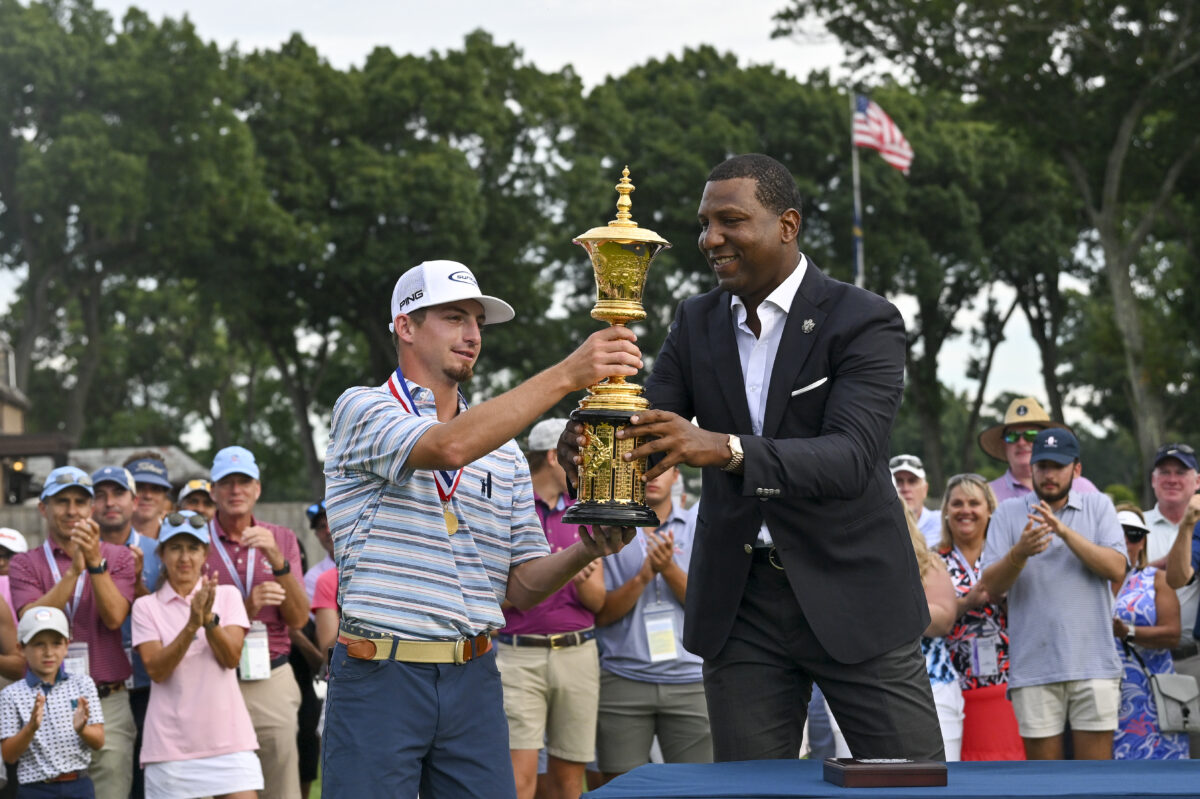[mm-video type=playlist id=01h1cn87n1b7wxwmp7 player_id=none image=]
LOS ANGELES – Jon Rahm sees the writing on the wall.
“The USGA and the R&A want to make a change to the ball to somehow protect the game, which is fine. If they think that’s the best decision, so be it,” he said.
But Rahm also has his qualms and pointed to LA Country Club, site of this week’s 123rd U.S. Open, to highlight his concerns.
“It’s funny to me because how many of the tee boxes on this golf course will become obsolete if they change the golf ball? At least half would be unusable for the next I don’t know how many years,” he said. “They keep trying to protect from distance by adding distance to a golf course in a way where only long hitters are going to have a better chance to win. I don’t know how else to really explain it. If they want to roll it back, then so be it.”
The USGA and R&A in March proposed a Model Local Rule that would give competition organizers the option to require the use of golf balls that are tested under modified launch conditions to address the impacts of hitting distance in golf. The rule, which wouldn’t go into effect until 2026, is intended for use only in elite competitions and, if adopted, will have no impact on recreational golf. Manufacturers and golf stakeholders can provide feedback until Aug. 14. But given the upheaval in the world of professional golf, should the process be delayed as was previously done during the height of COVID-19? USGA CEO Mike Whan said the process won’t be deterred by the PGA Tour’s recent agreement to form a commercial entity with the PIF.
“We started this in 2018,” Whan said. “It’s 2023 and we’re talking about implementing something not earlier than 2026. I was talking to a friend the other day who’s like, ‘Why are you rushing this through?’ I’m like, ‘How slow do we have to go?’ Started in ’18, talking about a ’26 implementation. He said to me, ‘Can’t you just slow this down?’ I’m like, ‘Slower than an eight-year process?’ ”
“I don’t know what the final outcome will be and what we’ll come in. If anybody feels like this is in a hurry I don’t think they’re really paying attention,” Whan added. “We’re talking about we’ve been back and forth in a listening process and we are now again, and we’ve told everybody recently that no earlier than 2026. We’re not talking about this season. We’re not talking about next season. We’re not talking about the season after that. I think if people feel rushed by this, I worry for them because this is a pretty slow process.”
Whan said the governing bodies feel a real responsibility to make sure “that whatever decisions we make don’t fracture some of the strongest pieces of the game.”
It is a complicated decision, and no matter the final decision, Whan knows it is inevitable that some parties will be disappointed. Fred Perpall, the USGA’s president, said that it is a decision being made for the future of golf – 50, 100 plus years down the road.
“We’re at a time in our history where governance and government has been like at an all-time low. No one loves to be governed,” Perpall said. “We all love to be popular, but sometimes I think you have to really think about what’s right. Equipment manufacturers, they’ve done their jobs. The elite players, they’ve done their jobs, too. They’re getting better, stronger, faster.
“But with the USGA and the R&A as governance organizations, like we’re the folks that have to wake up and think about the long-term health of the game.”
“A lot of my friends that I would play golf with would say no one really wants this,” he added. “Sometimes you have to have the courage to really do what’s right.”
On Monday, defending U.S. Open champion Matt Fitzpatrick voiced his concern that the Model Local Rule would create two different balls.
“If you’re going to roll the ball back, I think just do it for everyone so everyone is playing the same ball, and if it’s going 30 yards shorter, then great, whatever,” Fitzpatrick said. “I just wish they really would take the PGA Tour players’ thought and advice into consideration because one of the bigger benefits of golf is the fact that all amateurs and all professionals play under the exact same rules, and if you start changing that, it can be a slippery slope.”

Whan said the governing bodies are doing just that, and they are in the process of listening to all stakeholders of the game.
“Somebody said to me the other day, ‘Why do you go to the (PGA Tour) PAC meeting and ask a bunch of current PGA Tour professionals how do they feel good a ball being shorter. Like do you really have to fly there for that?’ That’s part of the governance. That’s part of the process. I may not like everything they say but I heard everything they said, and I heard everything they said a year ago as we made changes going into this time,” Whan said. “I wouldn’t say I’ve enjoyed the process, but it’s been a great learning experience. I think the feedback process is important and it makes us better. Even when we don’t like the feedback we get, it makes us better. We’ve got to balance over the next step of input whether or not one ball for all or model local rule is kind of a right approach.
“I think it would be impossible to say that this process and this feedback process hasn’t resulted in change along the way, and I believe it will continue to do that.
“I think I can speak on behalf of the R&A when I say both the R&A and the USGA believe doing nothing is a bad idea for the long-term future and health of the game. But part of doing something means you’ve really got to be out there and really asking for and taking direct comments, and that’s what we’ve been doing.”




